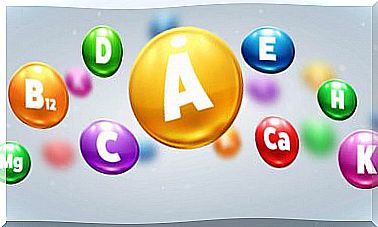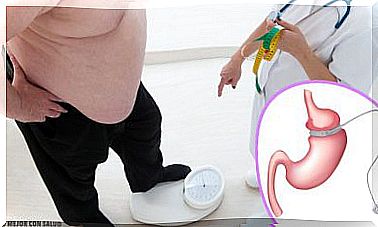Yellow Diarrhea: Why Does It Occur?
Having yellow diarrhea, with that characteristic color that is not consistent with the usual, can be scary, especially when the symptom is present in children or babies. The spectrum of situations that can be behind this condition is varied.
Sometimes, it is just stress, and once the moment of anxiety is over, normality returns. Other times, it is a symptom of a more systemic condition, such as pancreatic problems.
The mechanism by which the stool stains yellow is the abundant presence of fat, which should not be in this amount. This stems from a rapid intestinal transit that failed to absorb enough lipids from the diet.
The body loads the stool with that fat that it could not absorb and yellow diarrhea appears. If we could see it under a microscope, we would realize that the color comes from small droplets of fat in suspension.
Causes of yellow diarrhea
The causes of yellow diarrhea are varied. It is always prudent for a physician to assess the situation and define the etiological origin. If it is a drug, for example, you can choose to stop treatment. If you suspect a bile pathology, you will request the relevant complementary studies.
Fleeting yellow diarrhea, limited to 48 hours, is not a concern. Once resolved, it may not appear again. If it is prolonged in time, then intervention is needed. Let’s see the most frequent causes below.
Irritable colon
Irritable bowel disease is the cause of yellow diarrhea in periods of accelerated intestinal transit. It is a chronic condition, very annoying, which is also linked to states of stress and anxiety.
Patients with irritable bowel range between times of constipation and times of diarrhea. As a general rule, this is accompanied by abdominal distention and gas production, with pain in the abdomen.
If certain criteria are met and the person consults for this particular symptom, it is logical for the doctor to inquire more about defecation habits to characterize a possible irritable bowel. There is no specific treatment for the disease, but drugs and lifestyle changes are combined.

Liver problems
The small intestine needs bile inside to complete digestion, especially fats. Bile substances emulsify lipids and allow them to enter the body for nutrition.
When a disease affects the liver and gallbladder, decreasing the production of bile acids, the intestine enters a malabsorption phase. Among the most affected nutrients are lipids, which are expelled with the feces without being digested.
Hepatitis, gallbladder stones, and cholecystitis can cause yellow diarrhea. To this are added other symptoms, such as darkening of the urine and the change in the color of the skin and mucous membranes, turning to a particular yellow.
Stress
Stressed people alter their intestinal motility and, by accelerating peristalsis, suffer from diarrhea. At first, it will be given in a watery form, without too much content. But if the anxiety is prolonged and the digestive tract continues to accelerate, fat droplets will appear in the stool.
It is a transitory situation, but it is not uncommon for people affected by great loads of stress to have the symptom for weeks. Treatment cannot be based only on diet and medication, but requires psychological intervention as well.

Lack of pancreatic juice
The pancreas manufactures a series of substances that are released into the digestive tract to help in the process of absorbing nutrients. As with the liver, if a disease alters the organ, it will be impossible to absorb fats, which will come out with the stool.
The warning sign of yellow diarrhea due to pancreatic diseases is the possible presence of fibrosis or cancer in the head of the organ. If weight loss is added and a laboratory confirms dysregulation of glucose in the blood, the actions must be immediate.
Yellow diarrhea requires medical consultation
Although yellow diarrhea seems a minor symptom and is temporary in several situations, it warrants a medical consultation. Fats in the stool reveal an internal process that can be serious and needs attention.
Perhaps, with a small change in lifestyle the problem is improved. On the other hand, if the appropriate complementary methods are performed, a serious pathological process can be detected early.









